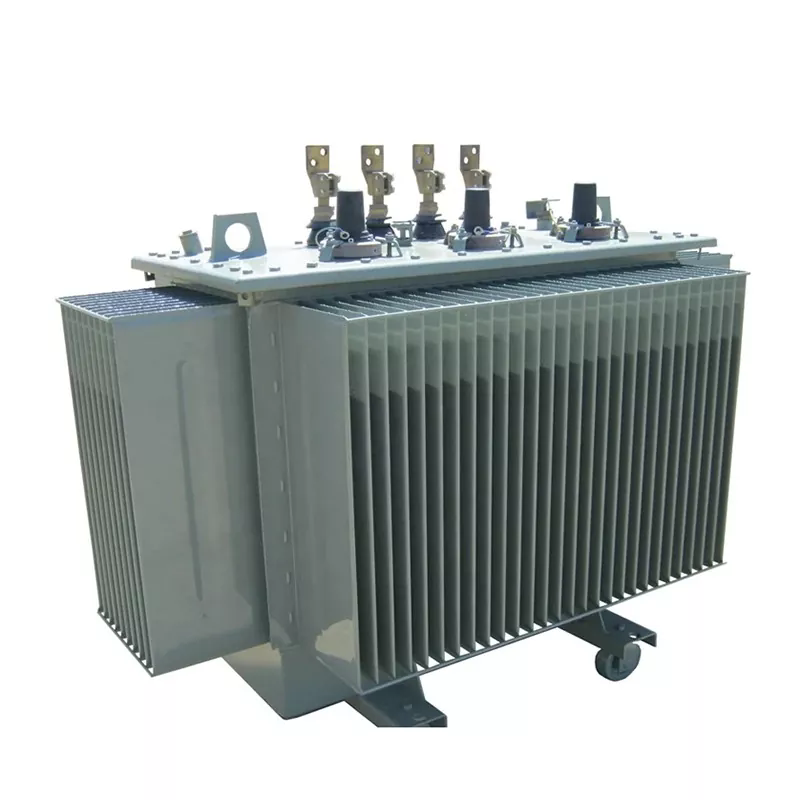Power Transformer: A Critical Component of the Electrical Grid
2025-03-05
The world relies heavily on electricity to power homes, industries, and businesses. One of the key elements in the distribution of electrical energy across long distances is the power transformer. These essential devices allow for the efficient transmission and distribution of electrical power, making them an integral part of modern electrical grids. In this blog, we’ll explore what power transformers are, how they work, and why they are so important in the energy sector.
What is a Power Transformer?
A power transformer is an electrical device that is used to transfer electrical energy between two or more circuits through electromagnetic induction. It functions by converting voltage levels from high to low or low to high, depending on the requirements of the system. This ability to step up (increase) or step down (decrease) the voltage allows electrical energy to travel long distances through high-voltage transmission lines and then be safely distributed for use in homes and businesses.
Power transformers are typically large, robust devices used in power stations, substations, and at other key points in the electrical grid. They help ensure the efficiency of the electrical grid by adjusting voltage levels to minimize energy loss over long distances.
How Does a Power Transformer Work?
The basic principle behind the operation of a power transformer is electromagnetic induction. When an alternating current (AC) flows through a primary coil of wire, it generates a magnetic field. This magnetic field induces a voltage in a secondary coil that is located close to the primary coil. The number of turns in each coil determines whether the voltage will be stepped up or stepped down.
1. Step-Up Transformer: In a step-up transformer, the secondary coil has more turns than the primary coil. This results in an increase in voltage, making it suitable for transmission over long distances. High-voltage transmission reduces the energy loss that occurs due to the resistance in the wires.
2. Step-Down Transformer: In a step-down transformer, the secondary coil has fewer turns than the primary coil. This reduces the voltage and is used to supply power to homes, businesses, and industries at a safe, usable voltage.
The core of the transformer, usually made of laminated steel, is essential for guiding the magnetic field between the coils. It helps in efficiently transferring energy from the primary to the secondary coil, reducing energy losses.
Components of a Power Transformer
1. Core: The core of a power transformer is made from layers of high-quality silicon steel. It is the central component that provides a path for the magnetic field generated by the coils. The core is designed to minimize energy losses and maximize efficiency.
2. Windings: These are the copper or aluminum coils wrapped around the core. There are typically two sets of windings: the primary winding and the secondary winding. The number of turns in each winding determines the voltage transformation ratio.
3. Tap Changer: Some power transformers are equipped with a tap changer, which allows for adjustments to the voltage ratio. This is important for maintaining consistent voltage output, especially when the load on the system changes.
4. Insulation: The insulation in a power transformer is essential for preventing electrical shorts and protecting the device from damage. Oil, paper, or synthetic materials are commonly used as insulation in power transformers.
5. Tank: The tank holds the transformer’s internal components, including the core and windings. It is filled with oil, which helps cool the transformer and insulate it.
Types of Power Transformers
There are various types of power transformers, each designed for specific applications within the electrical grid. Some of the most common types include:
1. Distribution Transformers: These are used to step down the voltage for use in residential, commercial, and industrial applications. They are typically smaller and operate at lower voltages compared to transmission transformers.
2. Transmission Transformers: These are used for stepping up the voltage for transmission over long distances. They are generally larger and operate at much higher voltages.
3. Autotransformers: These transformers have a single winding that serves as both the primary and secondary winding. Autotransformers are often used in applications where only a slight voltage change is required.
4. Phase-Shifting Transformers: These transformers are used to control the phase of the voltage in the electrical grid. They are useful in managing the load flow between different parts of the grid and stabilizing the system.
Why Are Power Transformers Important?
Power transformers play a critical role in the distribution of electrical energy. Here are a few reasons why they are indispensable in modern society:
1. Efficient Energy Transmission: Power transformers help ensure that electrical energy is transmitted over long distances with minimal energy loss. By stepping up the voltage for transmission and stepping it down for use, they reduce the amount of energy lost due to resistance in the transmission lines.
2. Safety: By stepping down high-voltage electricity to a safer level, power transformers help protect both consumers and equipment. The ability to control voltage ensures that electricity can be used safely in homes, offices, factories, and other environments.
3. Voltage Regulation: Power transformers help maintain a consistent and stable voltage level throughout the electrical grid. This is important for ensuring the reliable operation of electrical devices and machinery, as fluctuations in voltage can cause damage to sensitive equipment.
4. Supporting Modern Infrastructure: With the increasing demand for electricity, especially in growing urban areas and industrial sectors, power transformers are vital for ensuring that the electrical grid can handle high loads and deliver consistent power to consumers.
5. Renewable Energy Integration: As renewable energy sources, such as wind and solar power, become more integrated into the electrical grid, power transformers are essential for managing the variability of renewable energy generation. They help regulate and stabilize the voltage levels to accommodate these sources.
Maintenance and Care of Power Transformers
Like any electrical equipment, power transformers require regular maintenance to ensure optimal performance. Some of the key aspects of transformer maintenance include:
1. Oil Analysis: The insulating oil used in power transformers can degrade over time. Regular oil analysis can detect impurities, moisture, or gases that may indicate a problem.
2. Visual Inspections: Routine inspections are necessary to identify signs of wear, damage, or leaks in the tank and insulation.
3. Temperature Monitoring: Overheating can damage the transformer’s internal components. Monitoring the temperature ensures that the transformer operates within safe limits.
4. Cleaning: Dust and debris can accumulate on the transformer’s surface and affect its efficiency. Regular cleaning helps maintain proper ventilation and cooling.
5. Testing: Periodic testing of electrical and mechanical components ensures that the transformer is operating within its specifications.
Conclusion
Power transformers are vital components of the electrical grid, ensuring that electricity is transmitted efficiently, safely, and reliably. They enable the distribution of electrical energy over long distances while minimizing energy loss and protecting sensitive equipment from voltage fluctuations. As demand for electricity continues to rise, the role of power transformers will only become more significant in supporting modern infrastructure and integrating renewable energy sources into the grid. With proper maintenance and care, power transformers can continue to function effectively, supporting the smooth operation of our electrical systems for years to come.



